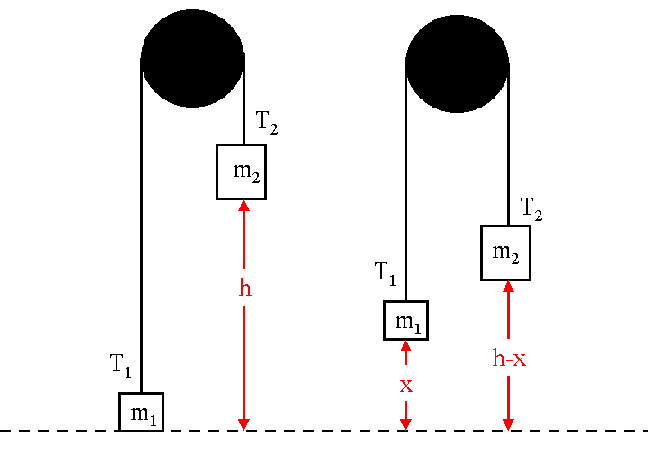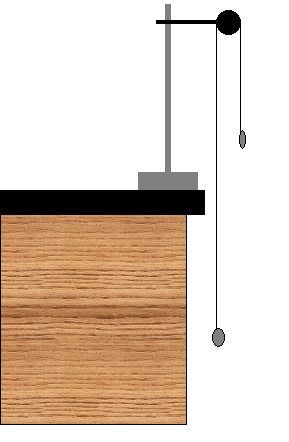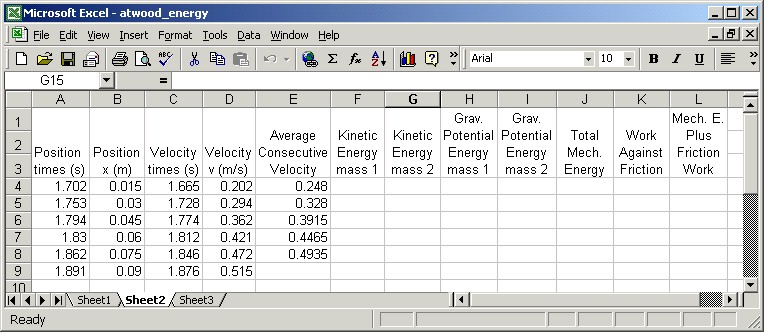

 PYL
105: Lab 7
PYL
105: Lab 7



The figure below shows an Atwood's machine, two unequal masses (m1 and m2) connected by a string that passes over a pulley.

Consider the forces acting on each mass. Assume that the string is massless and does not stretch and that pulley is massless and frictionless. Derive an expression for the acceleration; it should have the form

Of course, this is an idealized calculation, and we cannot expect to find this acceleration experimentally. Let us keep the other approximations but drop the frictionless approximation, identifying friction as the cause of any deviation from the ideal acceleration given above. We can then relate the frictional force to the difference between the ideal and experimental accelerations. The ideal force leads to the ideal acceleration
We could also adopt the energy approach to this problem. One of the first steps in the energy approach is to determine the "system" for which we are calculating the energy. The "system" could be
Returning to the frictionless approximation, find an equation relating the work done by T1 to the change in energy of the m1-earth system. Assume the mass starts from rest and is displaced a distance x from its initial position. Similarly find an equation relating the work done by T2 to the change in energy of the m2-earth system. (They must be included in your report.) Since the tensions are equal in magnitude and the displacements are likewise equal in magnitude, we could eliminate the work done by the tensions to find

Of course, friction must be brought into the energy approach as well. Just as friction accounted for the deviation from the ideal acceleration in the previous approach, it should also account for any changes in the energy in the latter approach. That is, the work associated with the frictional force (the work done against the frictional force) should equal the observed change in energy.
Measurements
| m1 | m2 | h |

| aideal | aexp | Ffric |

Calculate the work done against friction (in column K).
